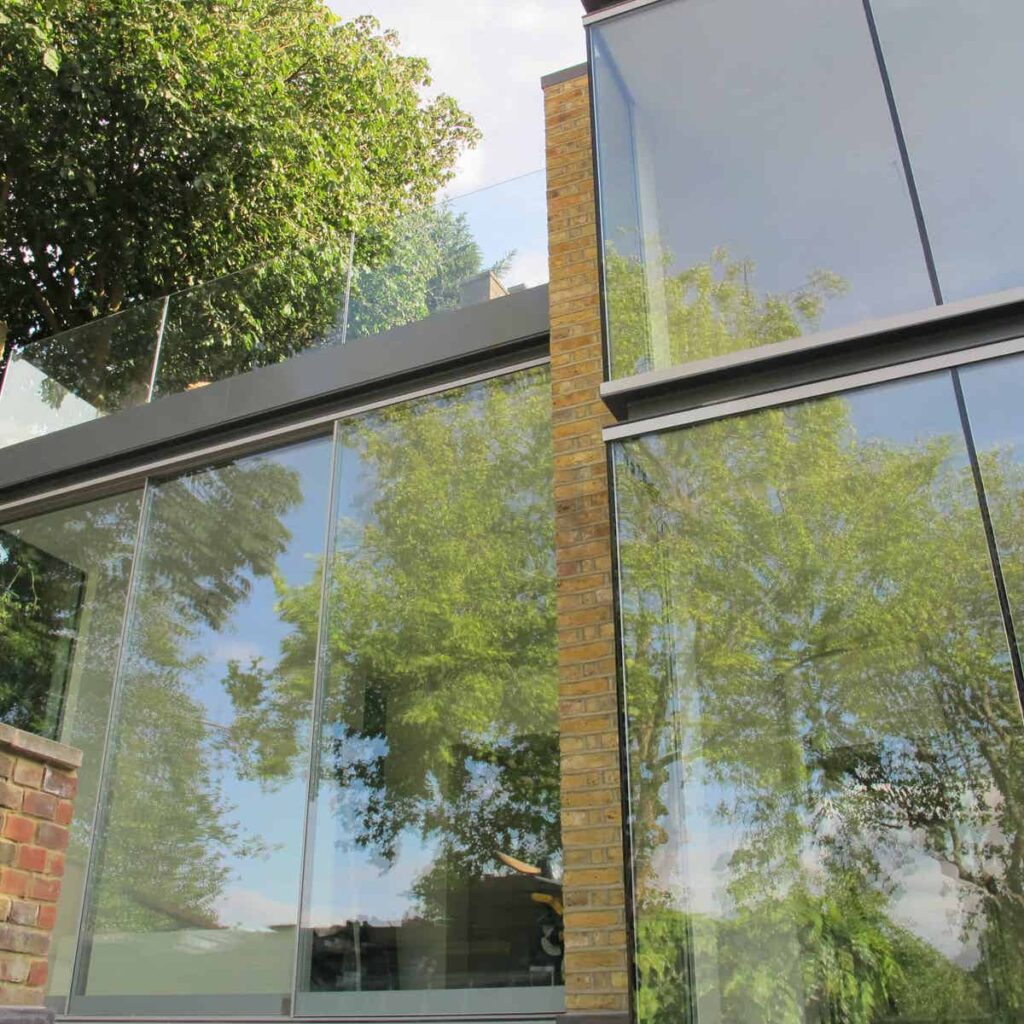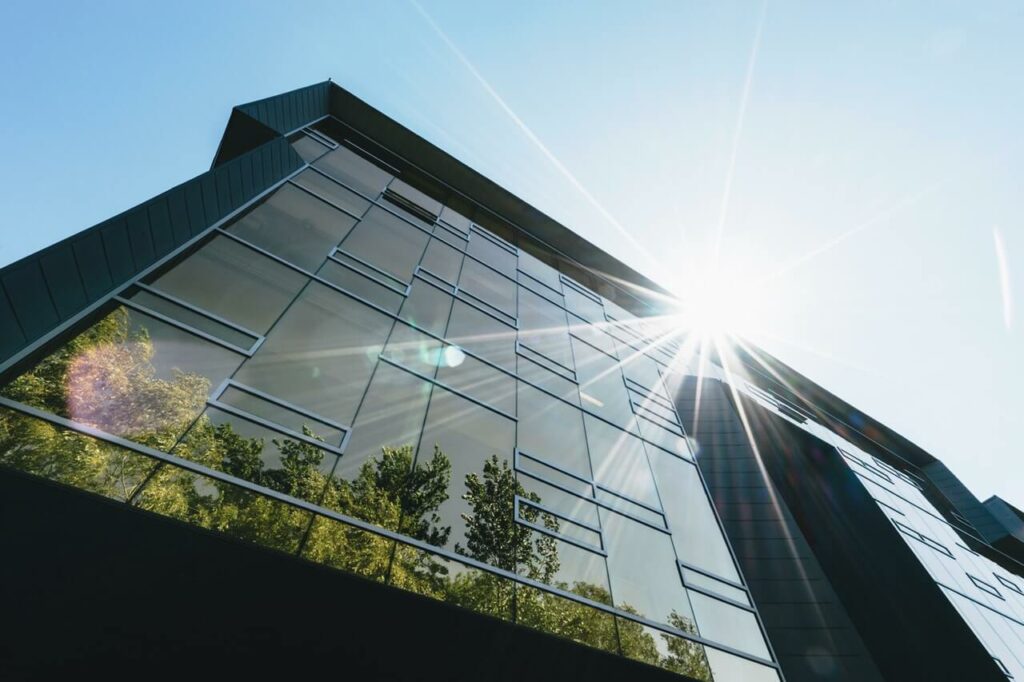Architectural glass is a term used to describe glass elements in a building. It particularly refers to glass facades and glass that becomes the feature of a building.
It is currently used broadly in the architectural industry in creating frameless doors, windows, extensions, balconies, and stairs. Below we have put together a list of various types of architectural glass:
Solar control glass
Solar control glass includes a special covering that helps with lessening the heat entering your house. This sort of glass can retain and reflect heat and help reduce the requirement for air-conditioning. Thus, your home stays bright and cooler than with ordinary glass. Solar control glass is not coloured, even though such finishes can be made for beautifying reasons, whenever desired.
Using this, glass can offer benefits such as:
- Improved visual comfort from direct daylight
- Low transmission
- It provides privacy in homes and offices.
- High light reflectance
- Low maintenance
Sun control glass is usually double-glazed. By lessening the requirement for air conditioning, such kinds of glass save more energy. You can find them in single, twofold, or triple glazing in a wide variety of colours.
Laminated Glass
Laminated glass is comprised of several sheets of glass separated by plastic films. Therefore, once it breaks, the pieces remain joined to the film. That makes it ideal for various safety installations.
The plastic film minimises the risks brought by shattered glass pieces and the danger resulting from easy penetration. If the glass panel shatters, there are higher chances that both laminated boards will break simultaneously. That implies that the remaining board and interlayer will uphold the wrecked glass and protect it until it is replaced.
Various interlayers are available which use different technologies to the application. Structural interlayers may be used to increase the power of the glass when high loadings are necessary. Colored interlayers can be utilized for security or ornamental purposes. Different properties, such as sound-dampening and fire resistance, can likewise be included within the interlayer.

Toughened Glass
Toughened glass is made using a particular cooling method to counteract stresses, implying that it will shatter once it gets damaged instead of breaking into shards. That makes it safe since it minimises injury.
Toughened glass, made by heat treatment, is multiple times stronger than regular glass to protect it from physical or thermal shock. The counteracting stresses provide hardened glass with high mechanical resistance from breakage. It produces small square pieces instead of long, harmful shards that will cause injuries if it breaks.
Decorative Glass
There are different options available:
- various colors
- surface structures
- reflectivity
- transparencies
- opacity levels
The use of decorative glass has become a regular practice to make residential just as business structures welcoming.
You can use decorative glass to design:
- kitchen backsplashes
- shower enclosures
- shelves
- table tops
- glass floors
Reflective Glass
Reflective glass provides a mirror-like appearance with multiple colours to the exterior of structures during the daytime. A layer of metal oxide is put on one side of the glass to enhance its reflection level. You can use reflective glass in offices and tall building doors and windows to enhance privacy.

Sound Insulation Glass
Sound insulation glass minimises sound waves that travel through it. By bringing down the acoustic energy of the sound wave, its noise is diminished. Acoustic insulation is the way to prevent noise from going through, for instance, between a noisy place and a quiet room inside a structure. The greater the acoustic insulation of a coating, the larger the comfort, with a subsequent positive effect on health.
Its glass sheets are thicker and the air cavity separating them is more significant. That assists with decreasing the reverberation of loud noises hence making it harder for sound to go through. Another unique feature used to soundproof a window is filling the glass units with a latent gas, for example, krypton. These gases are harder for sound to go through than ordinary air. When the sound waves travel through the gas, they lose energy and volume.
For further information on architectural glass, get in touch today.

